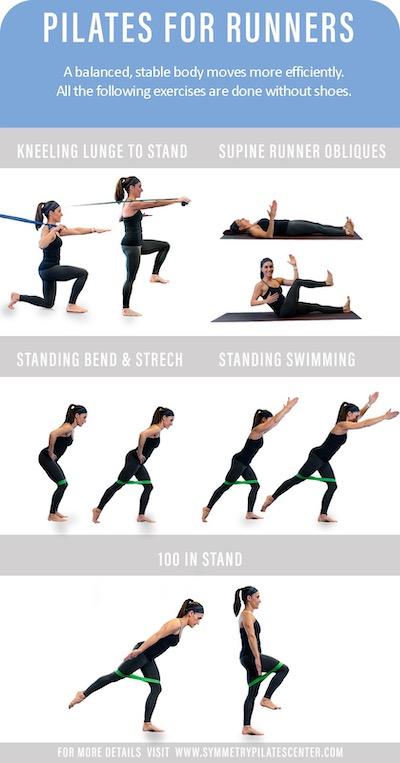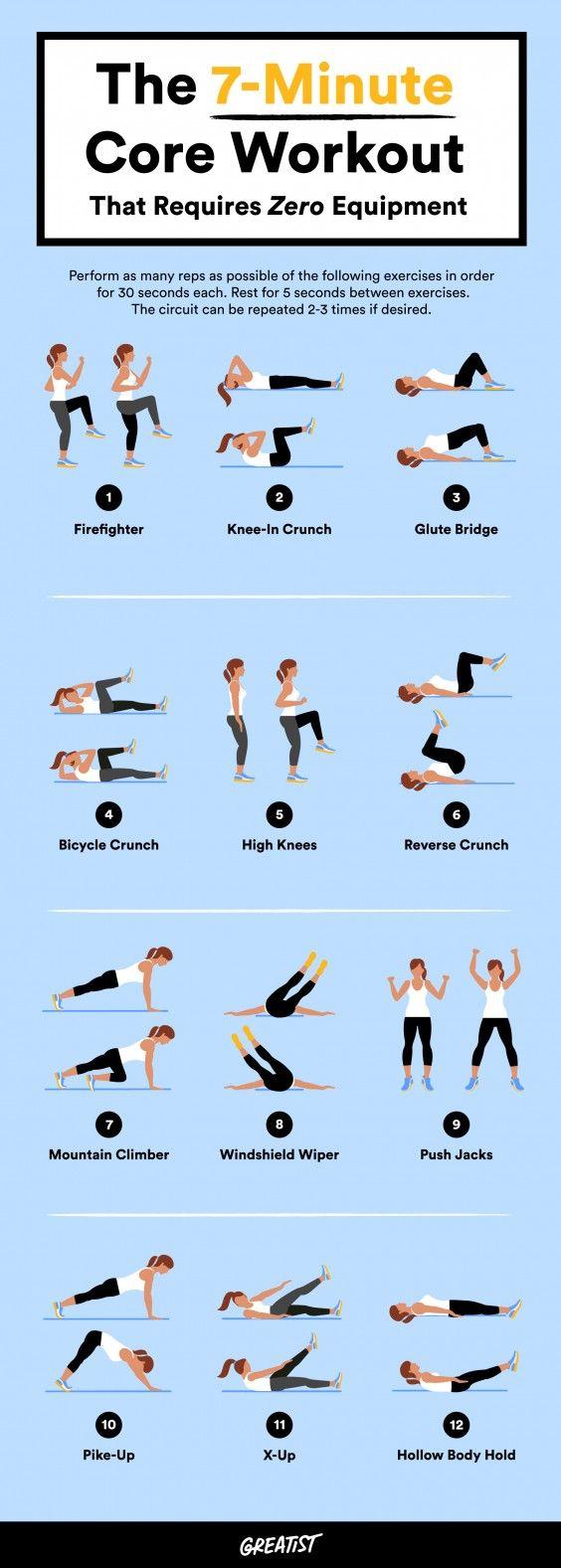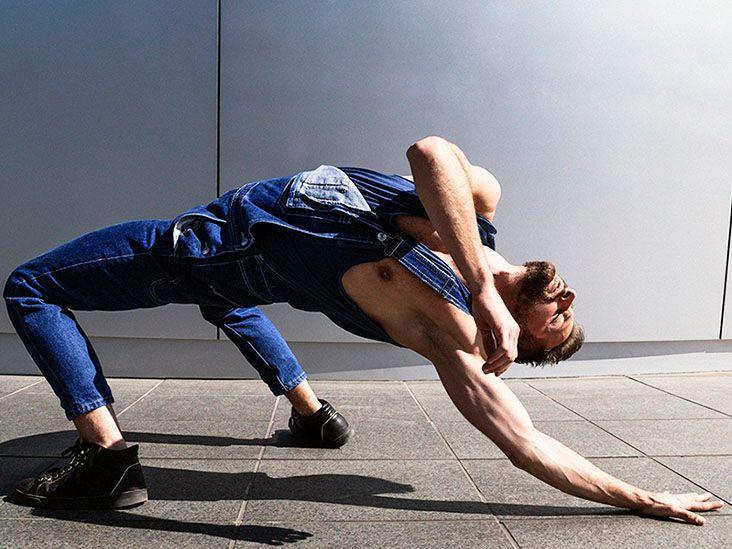In the world of athletics, where every stride counts and the quest for peak performance is relentless, runners often find themselves seeking innovative ways to enhance their capabilities. Amidst the array of training regimens and conditioning techniques,Pilates has emerged as a powerful ally for those who pound the pavement. This low-impact exercise method,rooted in principles of strength,adaptability,and body awareness,offers a unique approach to not only elevate running performance but also shield against injuries that can sideline even the most dedicated athletes. In this article, we delve into how integrating Pilates into a runner’s routine can lead to improved technique, enhanced core strength, and a more resilient body, preparing you for those long miles ahead. Whether you’re a seasoned marathoner or a weekend jogger, the synergy between Pilates and running might just be the secret ingredient you’ve been searching for.
Table of Contents
- Understanding the Unique Benefits of pilates for Runners
- Incorporating Core Strengthening Techniques for Enhanced Stability
- Flexibility and Mobility: Key Components to injury Prevention
- Designing an Effective Pilates Routine Tailored for Runners
- Q&A
- To Conclude
Understanding the Unique Benefits of Pilates for Runners
Pilates offers a multitude of advantages tailored specifically for runners, focusing on enhancing core strength, flexibility, and endurance. By targeting the deep stabilizing muscles of the body, Pilates helps maintain proper running form and posture, making it easier to move efficiently.This integrated training method can lead to improved performance on the track, as it encourages a balanced intensity across muscle groups, ensuring that energy is conserved throughout long distances. Additionally, Pilates promotes mind-body awareness, which allows runners to connect with their bodies more effectively, leading to improved control and stability during runs.
Incorporating Pilates into a runner’s training routine also plays a vital role in injury prevention. The exercises focus on strengthening commonly overlooked areas, such as the hips and glutes, which are crucial in supporting the lower body during running. With an emphasis on improving flexibility and joint mobility,Pilates can help reduce muscle tightness,minimizing the risk of strains and overuse injuries. Below is a table summarizing key benefits of Pilates for runners:
| Benefit | Description |
|---|---|
| Core Stability | Enhances balance and support during the run. |
| Flexibility | Reduces tightness, promoting a greater range of motion. |
| Muscle Balance | Strengthens underused muscles, helping to prevent injuries. |
| Mindfulness | Encourages a deeper connection with body movements. |
Incorporating Core strengthening Techniques for Enhanced Stability
To excel in running, it is crucial to build a solid foundation of core stability. Core strengthening techniques can considerably enhance your running performance by allowing for better alignment and balance during your strides. Here are some effective approaches that you can easily incorporate into your routine:
- Planks: Hold a plank position to engage your entire core and improve stability.
- Bridge exercises: This technique helps strengthen the glutes and lower back, fostering a strong connection to the core.
- Side-lying leg lifts: Focuses on the obliques while enhancing hip stability, crucial for maintaining proper form.
- Pilates Roll-Up: This movement improves flexion and strength throughout the spine and engages the abdominal muscles.
In addition to strengthening exercises, consider integrating specific Pilates techniques that promote coordination and control. These methods can improve your muscle activation and endurance during runs:
| Technique | Benefits |
|---|---|
| Single Leg Stretch | Enhances coordination and strengthens the abdominals. |
| Reverse Crunch | Target the lower abs, which helps with pelvic stability. |
| Teaser | Improves overall core strength and balance. |
By consistently practicing these core-focused techniques, runners can achieve greater stability, leading to more efficient movement patterns and a lower risk of injury. Emphasizing core strength creates a resilient body that supports the demands of distance running.
Flexibility and Mobility: Key Components to Injury Prevention
The connection between flexibility, mobility, and injury prevention cannot be overstated, especially for runners who push their bodies to the limit.By engaging in a regular Pilates regimen, runners can enhance their range of motion and muscle elasticity, which are crucial for maintaining optimal running form and efficiency.Pilates focuses on elongating the muscles and improving joint flexibility, allowing for deeper stretches and better movement patterns. This practise helps to correct postural imbalances and decrease susceptibility to injury by ensuring that muscles work harmoniously during runs. Key benefits include:
- Increased flexibility: Enhanced muscle elasticity leads to improved strides and reduced risk of strains.
- Better mobility: Improved joint movement facilitates a more efficient running gait.
- Postural alignment: Strengthens core muscles, supporting proper running posture and mechanics.
Additionally, Pilates emphasizes strength in stabilizing muscles, which are often neglected in conventional running training. By integrating exercises that target the core, hips, and glutes, runners can develop a solid foundation that translates to greater endurance and power over long distances. keeping these muscle groups strong and engaged can minimize the stress placed on the knees,ankles,and lower back,significantly reducing the likelihood of common running injuries. engaging in Pilates can foster a well-rounded fitness approach, incorporating:
| Core Exercises | Benefits |
|---|---|
| Pelvic Tilts | Strengthens the lower back and core stability. |
| Leg Circles | Enhances hip flexibility and coordination. |
| Swan Dive | Improves spinal flexibility and upper body strength. |
Designing an Effective Pilates Routine Tailored for runners
To create a pilates routine specifically designed for runners, focus on exercises that enhance core strength, flexibility, and balance. By integrating specific movements, you can improve running efficiency and reduce the risk of common injuries. Consider including the following elements in your routine:
- Core Stabilization: Exercises like the Plank and Teaser help bolster the core muscles,providing stability and support during running.
- Leg Strengthening: Utilize the Single Leg Stretch and Leg Circles to develop strength in your hips and legs, which can contribute to a stronger stride.
- Flexibility Training: Incorporate movements such as the Saw and Spine Stretch to enhance hamstring and back flexibility, crucial for an efficient running posture.
- Balance Work: Adopt exercises like the Balance Control Front or Side that improve proprioception, enhancing stability and control while running.
Furthermore,the emphasis should be on integrating breath work and alignment principles,crucial for optimal performance. Transition smoothly between exercises to maintain an elevated heart rate and promote endurance. Here’s a simple weekly pilates schedule for runners to follow:
| Day | Focus | Duration |
|---|---|---|
| monday | Core & Stability | 30 minutes |
| Wednesday | Flexibility | 30 minutes |
| Friday | Full Body Strength | 45 minutes |
| Saturday | Recovery & Stretch | 30 minutes |
Q&A
Q&A: Pilates for Runners – Improve Performance and Prevent Injuries
Q1: What is Pilates, and how can it benefit runners?
A1: Pilates is a low-impact exercise method that focuses on core strength, flexibility, and overall body awareness.For runners, Pilates can enhance performance by improving posture, balance, and muscle alignment. It also addresses common muscle imbalances and weaknesses,reducing the risk of injuries associated with repetitive running motions.
Q2: How can Pilates help with common running injuries?
A2: Pilates strengthens the muscles that support and stabilize the body, particularly the core, hips, and glutes.By focusing on these areas, Pilates can alleviate strain on the knees, shins, and lower back, which are frequently plagued by injury in runners. Additionally,the emphasis on controlled movements can definitely help teach runners proper mechanics,lessening the likelihood of injuries over time.
Q3: Is pilates suitable for runners of all levels?
A3: absolutely! Pilates can be adapted to suit both beginners and seasoned runners. for newcomers, it provides a safe way to build strength and flexibility, while advanced practitioners can benefit from targeted exercises that challenge their endurance and enhance their running performance. It’s a versatile practice that complements any training regimen.
Q4: What specific Pilates exercises are most beneficial for runners?
A4: Some staple exercises for runners include the Hundred, Single Leg Circles, Leg Pull front, and Side Kick Series. These movements focus on core activation, hip mobility, and leg strength, which are essential for efficient running. In addition, exercises like the Bridge and Spine Stretch can enhance spinal flexibility and improve hip extension, optimizing stride length and overall efficiency.
Q5: How often should runners incorporate Pilates into their training routine?
A5: Ideally, runners should aim to integrate Pilates sessions 1-3 times a week, depending on their training load and recovery needs. Consistency is key; even short sessions can yield significant benefits. Some runners find it effective to practice Pilates on recovery days or as part of their warm-up routine to maintain balance and prevent overuse injuries.
Q6: Can Pilates improve my running speed and endurance?
A6: Yes, Pilates can lead to improved running speed and endurance! By enhancing core strength and stability, Pilates helps runners maintain proper form over longer distances, conserving energy and preventing fatigue. Furthermore, improved flexibility promotes a more efficient range of motion, allowing for faster and more fluid running mechanics.
Q7: How does one get started with Pilates?
A7: To begin your Pilates journey, consider joining a class with a certified instructor who specializes in Pilates for athletes. Alternatively, there are many online resources, including videos and apps, that cater to all levels. Start with foundational movements and gradually incorporate more advanced exercises as you build strength and confidence. Whether in a studio or at home, prioritize good form to maximize benefits and prevent injury.
Q8: Can I do Pilates if I’m currently nursing an injury?
A8: It depends on the nature of the injury. Some Pilates exercises can be therapeutic and rehabilitative,promoting healing and strength recovery. However, it’s essential to consult with a healthcare professional or physical therapist before starting any new exercise programme. They can provide guidance on which Pilates exercises are appropriate for your specific situation.
Q9: What should I keep in mind when incorporating Pilates into my running regimen?
A9: First, listen to your body. Pay attention to how Pilates affects your running performance and adjust accordingly. Focus on quality over quantity; it’s better to perform fewer,well-executed repetitions than to rush through exercises. Lastly, remember that Pilates is not a replacement for running—it’s a complementary practice that can enhance your running experience, improve performance, and protect against injuries.
By integrating Pilates into your running routine,you can discover a new dimension to your training that not only enhances performance but also fortifies your body against the challenges of running.
To conclude
As we lace up our running shoes and hit the pavement, it’s easy to overlook the vital role that strength and stability play in enhancing our performance. Pilates offers a holistic approach to this undertaking, bridging the gap between strength training and the finesse of flexibility. By integrating Pilates into your routine, you not only amplify your running efficiency but also fortify your body against the injuries that can so easily sideline your progress.
as you embark on this journey, remember that each breath and movement in Pilates serves to fine-tune your body’s mechanics, encouraging a deeper connection with your athletic self. Embracing this practice means investing in your long-term health as a runner, ensuring that you can chase your personal bests—whether on a quiet trail or a bustling city path—without the looming concern of injury.
With dedication and patience, Pilates can be the secret ingredient to unlocking new levels of endurance and resilience. So, as you cross the finish line of this article, consider incorporating Pilates into your running regimen. Your body—and your future runs—will thank you.



